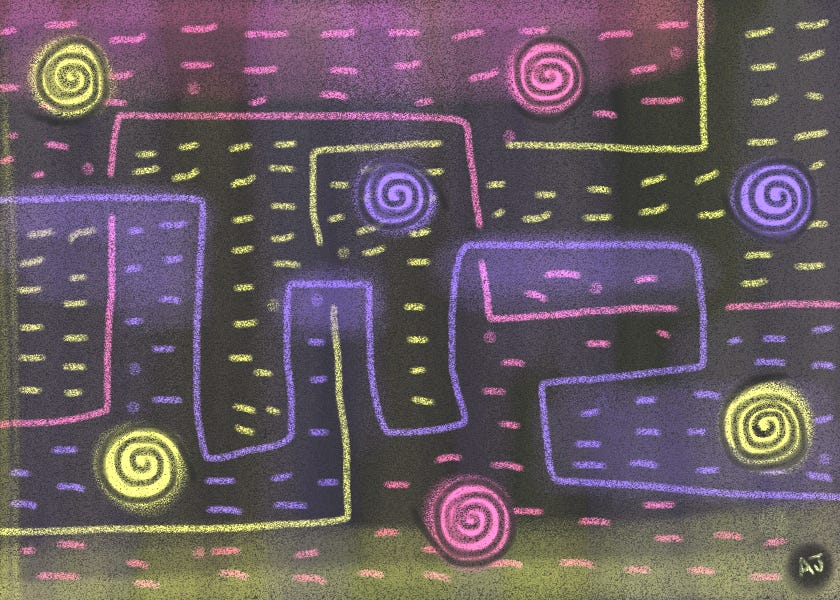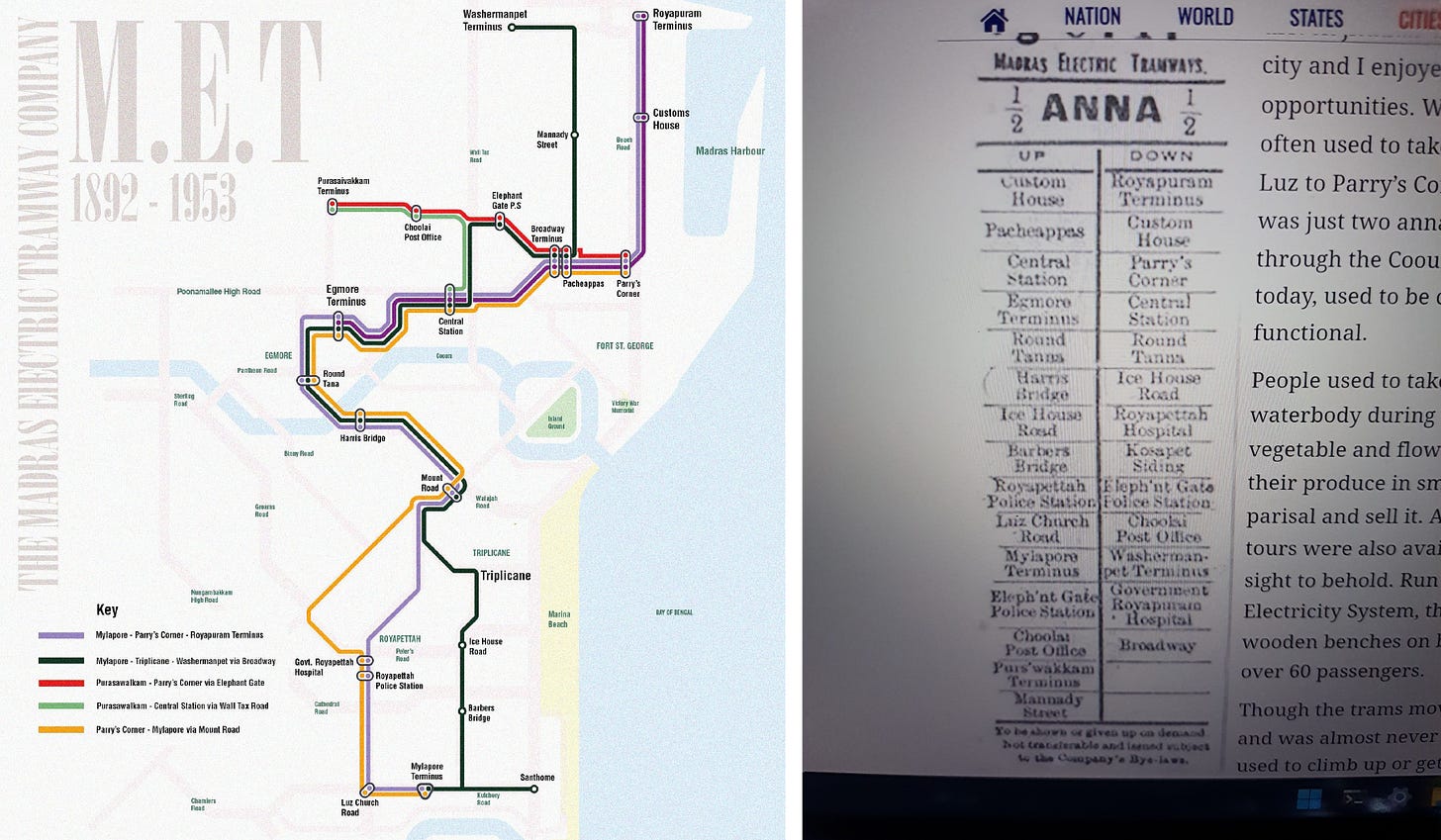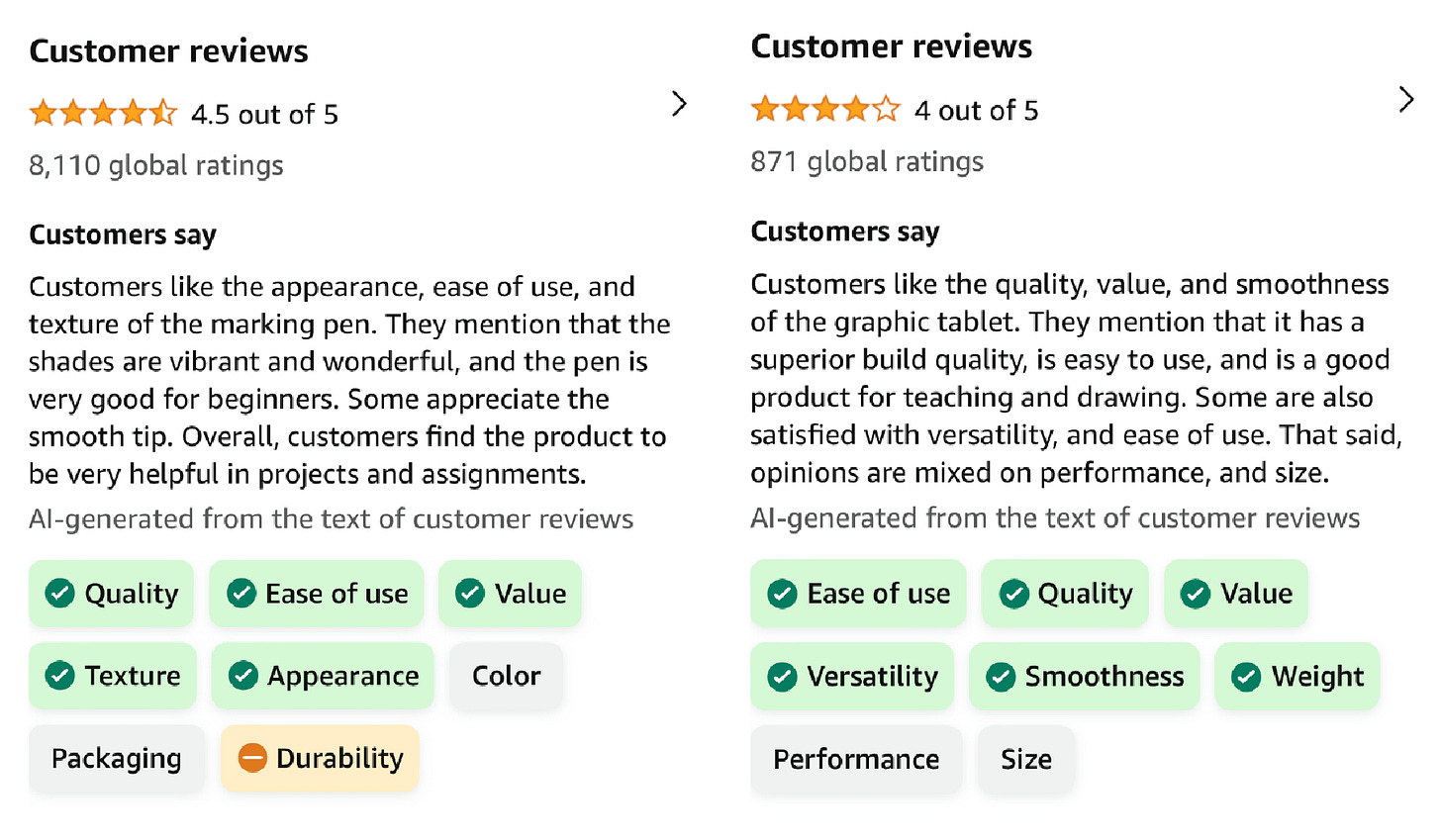#4: Karthik recreated 1950's Madras' Tramway Map, Basrai uses AI to test variables, Amazon's AI-generated summary of user reviews
I took a while to get around to Week #04 after taking a break for Christmas. But here we are now.
Madras’ Tramway Map recreated using old tickets
According to Karthik’s thread, he has meticulously traced all the potential stops of the Madras Electric Tramways using various methods, including tickets from that era. Operating from 1892 to 1953, the tramway’s closure in 1953 marked the end of an era, with the tracks, though never dismantled, gradually fading into obscurity due to the subsequent laying and replacement of roads.
The historical map paints a vivid picture of Madras during that period, revealing the tramway’s coastal route from Santhome to Royapuram and its inland extension to Egmore. For those familiar with present-day Chennai, the contrast is striking, as the tramway’s former path now constitutes only a small fraction of the modern city.
This exploration not only sheds light on the tramway’s past but also captures the evolving urban landscape, inviting reflection on the city's transformation over the years.
AI as a means for creating variability
Ayaz Basrai, in a recent series of posts, explores a potential application for GenAI tools such as Midjourney. He discusses the idea of leveraging these tools to expand on facade styles, architectural rhythms, and street elevations while maintaining the existing style system. Basrai illustrates this concept through the use of an example where a set of elevations is trained on the housing styles of Bandra Gaothans/Fontainhas in Goa. Subsequently, these trained elevations are employed to generate numerous permutations.






If executed correctly, this approach has the potential to create various sets of compound walls, storefronts, and signage formats that not only stylistically align with established norms but also adhere to restrictive building regulations. Basrai's exploration suggests a promising avenue for using GenAI tools to harmonize innovative design with existing architectural styles and regulatory frameworks.
Amazon's AI-generated summary of user reviews
Amazon has initiated the creation of concise, summarised reviews for products by utilising existing user feedback. The process involves inputting user reviews into an AI system, which subsequently generates a consolidated feedback. The resulting summary includes a brief note accompanied by highlighted words with positive, neutral, and negative values assigned to them.
This feature was initially introduced around July or August 2023, but its prevalence has become more noticeable on Amazon India in recent times. This development is advantageous as it provides a swift overview of the product without the need to sift through multiple reviews, thereby enhancing the overall user experience.




